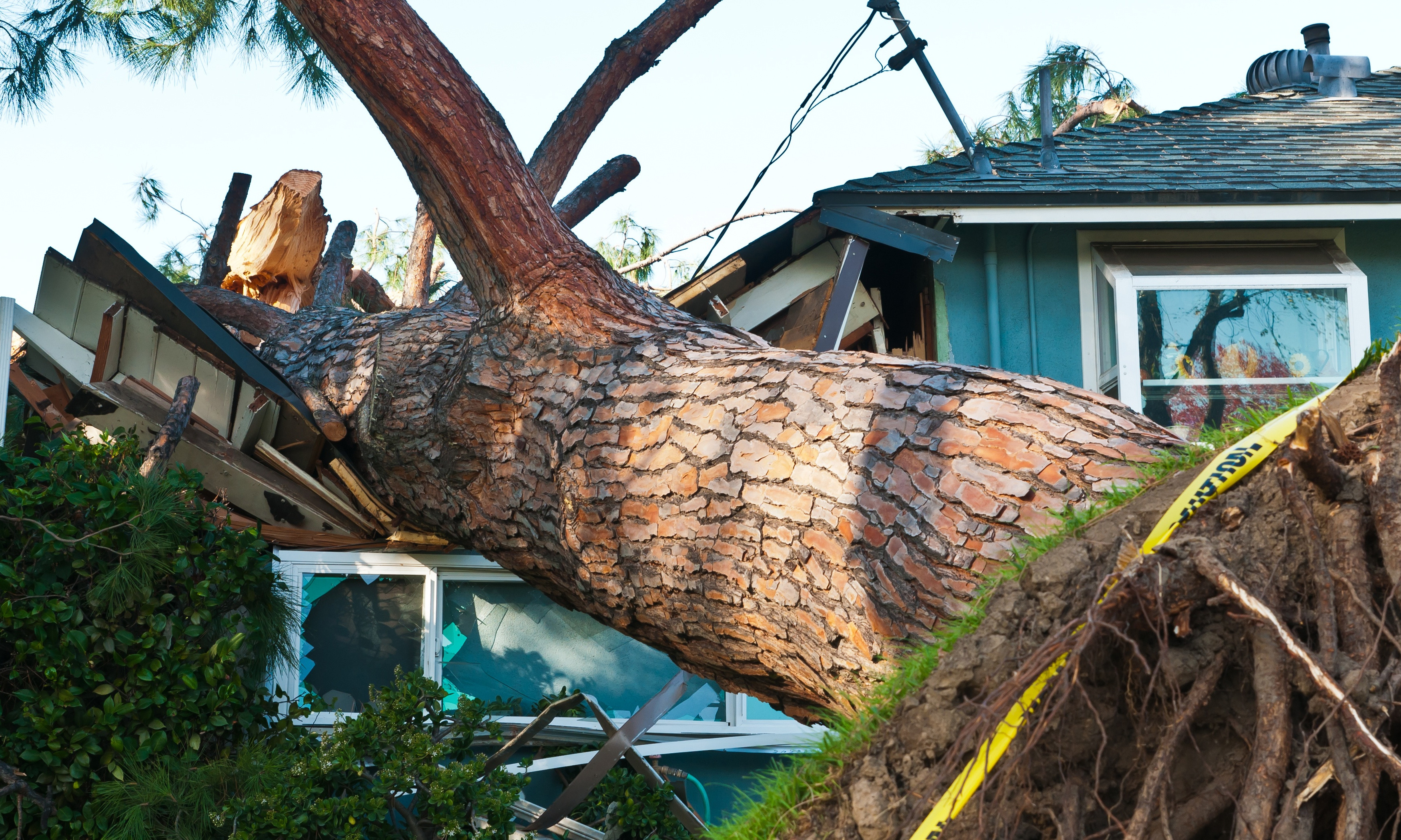
Winter storms and high winds can turn everyday items into deadly flying objects. But there are many precautions businesses can take to secure work sites before wild weather hits.
High winds are particularly dangerous if tools, building materials and temporary structures are not adequately secured.
Even large objects such as shipping containers can be toppled by strong winds if not secured correctly.
Employers have an obligation to ensure workplaces are properly inspected and loose items secured.
Eliminating exposure to hazardous weather is often the best protection. Tasks should be rescheduled for when the wind drops or moved indoors if possible.
Structures should also be secured, loose items moved out of the wind and power turned off before leaving a site ahead of windy conditions.
When there is a risk of objects being blown around, there is a risk that workers and the general public will be harmed.
Inflatable amusement devices
Bouncy castles and inflatable slides can be a lot of fun, however injuries or even fatalities can happen if they are incorrectly set up and anchored, particularly in windy conditions.
Six children were killed at a Tasmanian school in 2021 when the bouncy castle they were playing on was blown into the air by a gust of wind.
All land-borne inflatable devices must be appropriately anchored, in accordance with the manufacturers’ specifications. The manufacturers’ operations manual should provide clear instructions on how to securely anchor an inflatable device onto turf or a hardstand (for example, asphalt or concrete) and the maximum wind speed for which the anchoring system is rated.
Where the inflatable’s anchorage system is not known or has been determined to be inadequate, the owner or operator must obtain specifications from a competent person.
A system of work for regularly monitoring wind speed is to be established to ensure that there is sufficient warning and detection as wind speed increases. It is advised that an on-site wind speed meter (anemometer) is used. This will provide more accurate wind speed monitoring than regional weather updates.
If monitoring indicates that the inflatable’s maximum rated wind speed is likely to be exceeded, it must be deflated and not used.
Emergency procedures must be clearly documented in the operation manual and periodically tested to ensure that those supervising the device know how to:
- respond to unexpected wind events
- safely remove riders from the device
- safely remove any riders trapped in the device
- safely deflate and secure the device.
Structures and marquees
Ensure that:
- the structure or marquee has been properly erected
- access to underground services is not obstructed
- above and below-ground services, such as overhead power lines, are identified and safe clearance distances maintained during installation and dismantling
- suitable anchor mechanisms are used (weights/stakes), taking into account adverse weather conditions, especially high winds
- anchor mechanisms are suitably protected against trips, impalement and traffic
- the ground is suitable for the anchor mechanisms
- all guy ropes are in a sound condition
- you have a safety procedure for severe weather conditions and all workers have been trained in this procedure.
Tree felling
Each year, Australian workers are seriously injured or killed during tree felling and related activities.
Wind is an important factor to consider.
Australian data indicates that about 65 per cent of fatalities in the industry occur during tree felling, 20 per cent during trimming/lopping and 7 per cent during cutting/clearing of felled material.
Professional arborists and loggers are most likely to be trained and competent in their tasks, but some allied occupations such as farmers, landscapers and emergency services undertake tree felling as an 'occasional' task and may have limited skills and experience.
For example, scheduling tasks that can be completed indoors, or delaying until the weather is no longer hazardous.
You should always consider engaging a professional arborist for felling:
- trees near powerlines, roads or buildings
- large shelterbelt trees
- trees with a heavy lean
- trees on sloping or unstable ground
- trees requiring machine assisted and/or sectional felling.
Our top five safety tips:
- ensure qualified people are on site to enable appropriate decision making of work to be carried out
- only use equipment designed and rated for the intended purpose (such as ropes, cables, correct sized chainsaw and wedges)
- never ask for the assistance of untrained people (client or member of public) and only undertake jobs within the capability of you or your team.
- assess and control all environmental factors
- establish appropriate exclusion zones when residential premises, persons or public are in the vicinity.
Safe Work Australia has published updated work health and safety guidance for tree work.
The Guide to managing the risks of tree work updates the previous Guide to managing risks of tree trimming and removal work.
Visit https://www.safework.sa.gov.au/ for more information.


